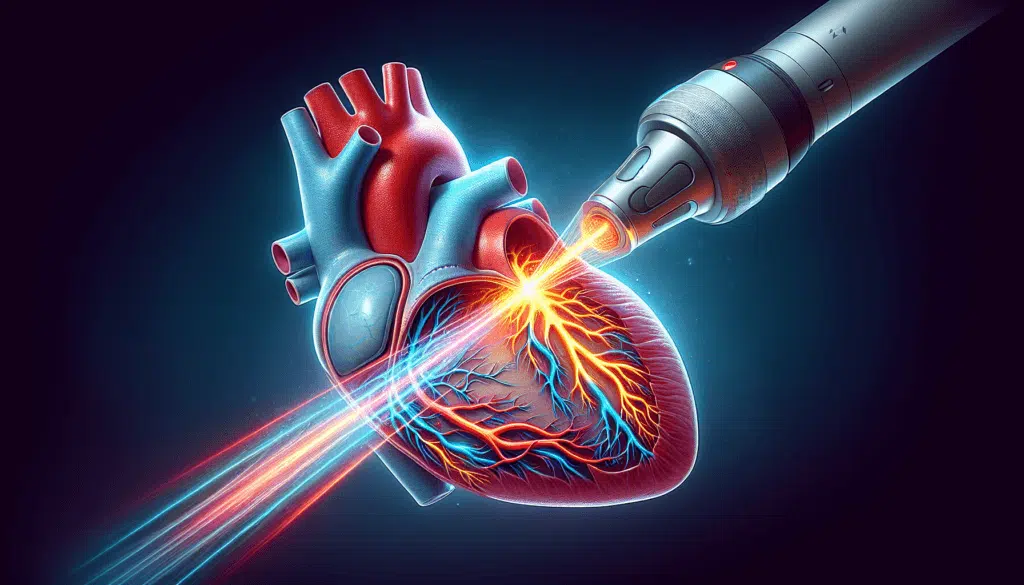Cardiologists at the renowned Mayo Clinic Cardiac Rhythm Clinic have begun using an innovative energy source to safely and successfully treat one of the most common types of heart arrhythmia: atrial fibrillation (AF). This new therapy, known as pulsed field ablation (PFA), has already been approved by the U.S. Food and Drug Administration (FDA), representing a major breakthrough in the treatment of this dangerous condition.
The irregular and often accelerated heart rhythm characteristic of AF can lead to the formation of blood clots in the heart, significantly increasing the risk of strokes. While doctors have medications and other therapies available to help restore normal heart rhythm, many patients develop persistent AF, which can worsen over time. For the past two decades, ablation has been an option for treating these cases; however, pulsed field ablation introduces a novel and potentially less risky approach.
Instead of using heat or cold as in traditional ablation, PFA employs bursts of high-energy electrical pulses called irreversible electroporation, specifically targeting the heart tissue responsible for atrial fibrillation. This treatment was successfully implemented for the first time at Mayo Clinic in Rochester in February 2024. Since then, cardiologists have treated over 200 patients with AF, yielding positive results and expanding therapeutic options for those suffering from this condition.
From Limitations to Innovation: Developing New Energy Sources
“Traditional methods using thermal energy sources to treat AF—such as radiofrequency, laser, or cryogenic energy—carry a significant risk of damaging nearby structures like the esophagus or the phrenic nerve,” explains Dr. Suraj Kapa, a cardiac electrophysiologist at Mayo Clinic.
PFA technology has been in development for over 18 years. The initial interest arose from the pioneering research of Dr. Samuel J. Asirvatham, another cardiac electrophysiologist at Mayo Clinic, who sought to create new energy sources that would allow for selective impact on the heart while minimizing damage to surrounding tissues.
“The principle behind PFA is that, depending on the composition of the cell membranes in different tissue types, it is possible to ‘buffer’ or ablate certain specific tissues while preserving others. Research has shown that PFA can exclusively target cardiac tissue, avoiding collateral damage to sensitive structures like the esophagus or phrenic nerve,” Dr. Kapa details.
This research led to the creation of two recently approved systems in the United States that deliver pulsed field energy directly to the heart. Both systems are designed to treat AF through pulmonary vein isolation and have shown efficacy comparable to traditional radiofrequency ablation in clinical trials.
Benefits of Pulsed Field Ablation
Pulsed field ablation (PFA) offers significant benefits, including the potential to reduce procedure times, minimize anesthesia, and eliminate some of the risks associated with traditional ablation.
“Minimizing risk and making effective treatments more widely available is essential. We want to ensure this therapy reaches those who need it most,” comments Dr. Kapa.
It is estimated that by 2030, more than 12.1 million people in the United States will be diagnosed with atrial fibrillation, more than double the cases recorded in 2010. Globally, AF cases continue to rise, highlighting the need for more effective and safer treatments.
“The growing evidence supports a more aggressive approach to controlling heart rhythm through ablation, whether early in the diagnosis or in the presence of other comorbidities such as heart failure, where ablation has been shown to reduce mortality,” Dr. Kapa asserts.
Looking Ahead of Heart Arrhythmia
Research is ongoing to evaluate how PFA could be used to treat other arrhythmias, such as ventricular arrhythmias. Initial preclinical data suggest that PFA could surpass traditional thermal energy-based methods for these types of arrhythmias. Looking ahead, Dr. Kapa anticipates rapid growth and evolution in pulsed field therapies.
“In the next year, we expect the introduction of at least half a dozen catheters and systems that use pulsed field therapy. Each will offer new research opportunities and the potential to provide transformative, curative care for patients with arrhythmia-related heart diseases.”







